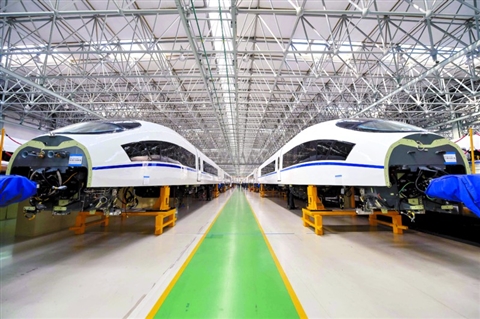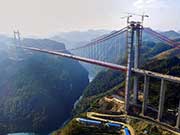


(File Photo: Xinhua)
China will put more emphasis on supply side structural reform in 2016 to ensure sustainable and sound economic development. This is an especially opportune time to do so since 2016 is the first year of China’s 13th Five Year Plan.
In an exclusive interview with People’s Daily, an "authoritative insider" offered his interpretation of the details of China’s supply side structural reform.
Q: What are the implications of supply side structural reform?
A: There are numerous interpretations of the term. Based on China’s current national condition, it can be understood as “supply side + structural + reform,” which means starting from elevating the supply quality, then restructuring the economy, reallocating resources and expanding effective supply.
Q: Why is supply side structural reform being highlighted right now?
A: The reform was decided on after careful deliberation about China’s economic situation. New economic risks are emerging from falling economic growth, industrial commodity price, corporate profit and the growth rate of fiscal revenue.
In addition, most of these problems are structural rather than cyclical. Against such a backdrop, China’s economy is unlikely to achieve a V-shape rebound, but instead an L-shape growth.
To deal with the medium and long-term economic malaise, the traditional Keynesianism methodology does not work. A structural reform is thus needed to address the root cause.
Q: How should China rearrange its work priorities in response to the supply side structural reform in order to achieve the new normal of the country’s economy?
A: Ten aspects should have priority. Economic development should focus more on quality and effectiveness, and supply side structural reform should place more emphasis on stabilizing economic growth.
In addition, macroeconomic regulations should focus more on market behavior and social psychological expectations. A diverse set of measures should be adopted for industrial structure adjustment.
A people-oriented philosophy should be upheld when advancing urbanization. It’s essential to maintain a balance between the population economy and resources; the environment as well as space should be kept in mind when a region pursues development.
More attention should also be paid to environmentally friendly production and consumption.
To improve people’s livelihood, specific measures should be launched for targeted groups. Meanwhile, the decisive role of the market should be better utilized in resource allocation, and China’s opening up should focus more on high-level and two-way opening.
Q: What’s the best way to maintain macroeconomic policies when promoting supply side structural reform?
A: From now on, China needs to step up efforts in supply side structural reform while expanding overall demand.
Five pillar strategies—namely, stable macro-policy, precise industrial policy, flexible micro-policy, practical reform policy and solid social policy—should be implemented to support the reform.
Q: What are the major tasks of supply side structural reform?
A: The five major tasks include reducing production capacity, unloading inventory, de-leveraging, lowering cost and filling the short board of the economy.

Q: Some people are concerned about the social impact brought by the reform. Can Chinese society sustain it?
A: During reform, especially when reducing excessive production capacity and shutting down “zombie companies,” it is likely that there could be an impact on society.
Turbulence cannot be entirely avoided, but it is worthwhile turbulence. If properly handled, the reforms will not cause long-term turmoil in society.
It is also worth mentioning that there is a limited window for reform, but it will not last indefinitely. Problems wait for no one, and the same is true of opportunities. If China does not push for reform today, it could face more serious repercussions in the future.
Day|Week

 Spectacular aerial photos of the Three Gorges
Spectacular aerial photos of the Three Gorges Admit it! That is a High-way built by China
Admit it! That is a High-way built by China Photos of Beijing Film Academy student hit the Internet
Photos of Beijing Film Academy student hit the Internet Spectacular aerial photos of the Three Gorges
Spectacular aerial photos of the Three Gorges New balls please! Polish sports stars strip off for risqué calendar
New balls please! Polish sports stars strip off for risqué calendar A glance at life of Ukrainian models working in Chongqing
A glance at life of Ukrainian models working in Chongqing Contestants of Mrs. Globe pose for photo in Shenzhen
Contestants of Mrs. Globe pose for photo in Shenzhen
 Bikini models attend hot pot banquet in Hefei
Bikini models attend hot pot banquet in Hefei 118-meter-high Never-used Building in NW. China Demolished
118-meter-high Never-used Building in NW. China Demolished J-10B fighters with homegrown engine in test flight
J-10B fighters with homegrown engine in test flight